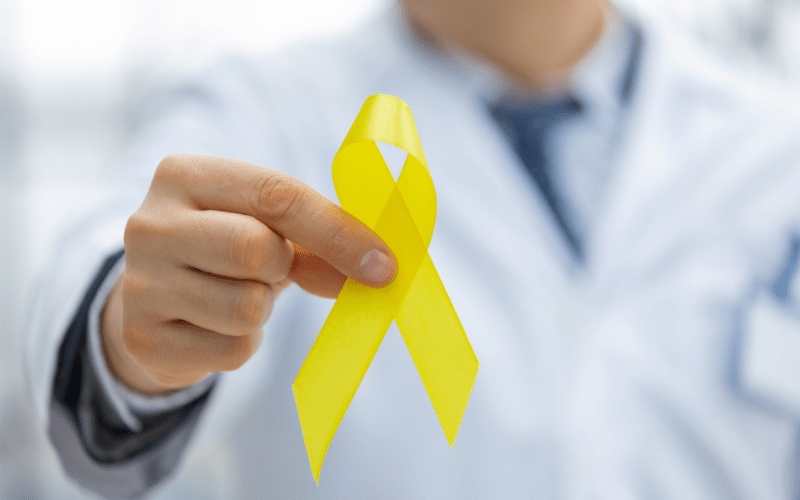
TABLE OF CONTENT
INTRODUCTION
“Men and Suicide: A Concern We Cannot Ignore” – this phrase encapsulates a pressing issue in our society that often goes unaddressed. In this blog post, we delve into the complex and sensitive topic of suicide among men, a subject that demands our attention and empathy. Our goal is to shed light on the various facets of this crisis – from understanding its roots in societal and psychological factors and recognizing warning signs to exploring ways of offering support and navigating professional help. We aim to provide a comprehensive guide that not only educates but also empowers readers to become part of a much-needed solution. This post is more than just an accumulation of facts; it’s a call to action for awareness, understanding, and change in how we address mental health challenges faced by men in our communities.
THE REALITY OF SUICIDE AMONG MEN
In discussing the stark reality of suicide among men, it’s crucial to confront some hard truths. Suicide, a profoundly serious public health issue, disproportionately affects men across the globe. The reasons behind this are complex and multifaceted, necessitating a deeper look into the societal, psychological, and emotional factors at play.
Startling Statistics: Globally, men are significantly more likely to die by suicide compared to women. This alarming trend is not confined to any single age group or demographic; it spans various cultures and socioeconomic backgrounds. In many countries, the suicide rate among men is notably higher, emphasizing the urgent need for targeted interventions and awareness.

Approximately 12 people die by suicide each day
Approximately 4,500 deaths by suicide per year
Suicide rates are approximately 3 times higher among men compared to women
Suicide is the second leading cause of death among youth and young adults (15-34 years)
Societal Expectations: Often, societal norms dictate how men should behave and process emotions, leading many to internalize their struggles. The expectation to appear strong and unemotional can prevent men from seeking help or even acknowledging their mental distress. This pressure to conform to traditional masculine roles can be a silent but deadly contributor to the rising suicide rates among men.
Mental Health and Stigma: Despite growing awareness, there’s still a significant stigma surrounding mental health, especially among men. This stigma can manifest as denial, embarrassment, or the fear of being perceived as weak. It often acts as a barrier to accessing mental health care, leading to untreated mental health conditions that could escalate to suicidal thoughts or actions.
SOCIETAL AND PSYCHOLOGICAL FACTORS
Understanding the societal and psychological factors is key to comprehending why men are more susceptible to suicide. These factors often intertwine, creating a complex web that can trap men in harmful patterns of thought and behaviour.
Cultural Norms and Masculinity: In many cultures, there’s a prevailing notion of what it means to be ‘masculine.’ Men are often expected to be the breadwinners, emotionally resilient, and stoic. These cultural norms can lead to immense psychological pressure. Men may feel inadequate if they cannot conform to these expectations, which can spiral into feelings of worthlessness or despair, contributing to suicidal thoughts.
Emotional Expression and Communication: Many men are taught from a young age to suppress their emotions. Phrases like “Men don’t cry” or “Be a Man” can affect emotional development and expression. This suppression can hinder effective communication about personal struggles, leaving men to deal with their issues in isolation, a factor that can significantly increase the risk of suicide.
Workplace Stress and Identity: For many men, their self-worth is closely tied to their career and financial success. Economic pressures, job loss, or workplace stress can greatly impact their mental well-being. When men define their value based on professional success, any threat to this can be devastating.
WARNING SIGNS AND SYMPTOMS IN MEN
Recognizing the warning signs and symptoms of suicide in men is a crucial step in prevention. These signs can be subtle and often overlooked, as men may not express distress in conventional ways. Here’s a closer look at what to watch out for:
Change in Behavior and Mood: A significant behaviour change is a key warning sign. This can include increased irritability, anger, or mood swings. Men might suddenly become more aggressive or, conversely, withdraw and become unusually quiet. These changes are particularly important if they’re a departure from their usual behaviour.
Loss of Interest in Activities: If a man starts losing interest in hobbies or activities that used to bring joy, it’s a red flag. This disinterest can extend to their professional life or relationships, indicating a general sense of hopelessness or lack of purpose.
Substance Abuse: An increase in substance use or risky behaviour can be a sign of underlying distress. Men might turn to alcohol, and drugs, or engage in dangerous activities as a form of escape or a way to cope with emotional pain.
Physical Symptoms: Mental distress can also manifest physically. Symptoms like persistent headaches, digestive issues, or a drastic change in sleeping patterns (either insomnia or excessive sleeping) should not be ignored.
Expressions of Hopelessness: Statements that imply a sense of hopelessness or worthlessness, even if they seem casual, should be taken seriously. Phrases like “I’m tired of all this,” “Nothing matters anymore,” or “Everyone would be better off without me” are alarming.
HOW TO OFFER SUPPORT AND HELP
When it comes to supporting men who may be facing suicidal thoughts, understanding and empathy are key. It’s about creating a safe space where they feel heard and validated. Here are practical ways to offer support and help:
Open, Non-Judgmental Conversation: Start by initiating an open conversation. Ask how they’re feeling and listen without judgment. Avoid dismissive comments like “You’ll be fine” or “Just cheer up.” Instead, use empathetic responses like “That sounds tough; how can I help?”
Encourage Professional Help: Gently suggest professional help. Many men might be reluctant to seek therapy or counselling due to stigma. Emphasize that seeking help is a sign of strength, not weakness. Offer to help find a therapist or accompany them to an appointment if they’re comfortable with it.
Provide Resources and Information: Share resources about mental health and suicide prevention tailored for men. This could include websites, helplines, or local support groups. Having access to this information might encourage them to seek further help.
Check-In Regularly: Regular check-ins can make a big difference. A simple message asking how they’re doing or if they need anything can show that you care and are there for them.
Ensure Safety: If you believe there’s an immediate risk of harm, don’t hesitate to seek emergency help. Safety is the priority in such situations.
MEN AND SUICIDE: PROFESSIONAL HELP AND RESOURCES
Navigating the path to professional help and resources for men struggling with suicidal thoughts is a critical step. Knowing what options are available and how to access them can save lives. Here’s a guide to some key resources:

Therapy and Counseling: Seeking therapy is a powerful way to address the underlying issues that may contribute to suicidal thoughts. Therapists can provide coping strategies, emotional support, and a safe space to discuss feelings. Encourage men to explore different types of therapy, like cognitive-behavioral therapy (CBT) or group therapy, to find what works best for them.
Psychiatric Help: In some cases, psychiatric intervention may be necessary, especially if there are underlying mental health disorders. Psychiatrists can assess and prescribe medications if needed, offering another layer of support.
Crisis Helplines: Crisis helplines are a vital resource. These confidential helplines are staffed by trained professionals who can provide immediate support and guidance during a crisis. Remind men that it’s okay to call these helplines whenever they feel overwhelmed.
Support Groups: Support groups provide a sense of community and understanding. They allow individuals to share their experiences and coping strategies in a safe, non-judgmental space. These groups can be particularly helpful in reducing the feeling of isolation.
Online Resources: There are numerous online resources available, including websites, apps, and forums dedicated to mental health and suicide prevention. These can be particularly useful for men who might prefer starting with anonymous support.
MEN AND SUICIDE CONCLUSION
As we conclude our exploration into the critical issue of men and suicide, it’s important to reflect on what we’ve discussed. This topic, though often shrouded in stigma and silence, is one that demands attention and understanding. Our journey through understanding the realities, societal and psychological factors, recognizing warning signs, and knowing how to offer support and access professional help, brings us to a crucial point – action and awareness.
Collective Responsibility: Addressing the issue of suicide among men is a collective responsibility. It involves not just those struggling but also their friends, families, and communities. By breaking the silence and encouraging open conversations, we can start to dismantle the stigma and barriers that prevent men from seeking help.
Encouraging Empathy and Support: Empathy is a powerful tool. Offering a listening ear and a supportive shoulder can make a world of difference. Remember, small gestures of understanding and acceptance can be the stepping stones towards healing.
Ongoing Education and Advocacy: Our efforts shouldn’t stop here. Continuous education about mental health, advocating for better resources and support systems, and promoting a culture where men feel comfortable expressing their emotions are essential steps toward change.
Men and Suicide A Call to Action: We encourage you to share this post, click the links above, talk about these issues with the men in your life, and advocate for more open discussions about mental health. If you or someone you know is struggling, reach out to the resources mentioned. Remember, asking for help is a sign of strength, not weakness.
In closing, let’s remember that behind every statistic is a human life. By increasing our understanding and support, we can contribute to a world where the phrase ‘men and suicide’ is no longer a prevalent reality, but a challenge we have collectively overcome. Let’s continue to work together towards a future where mental health is prioritized, and every individual feels valued and supported.

